Top 12 Most Beautiful Historical Sites in Nepal
Nepal is a small country with a big heart, and its people are quite basic and kind. When it comes to history, Nepal is the only country that has never been a ... read more...part of the British Empire. Nepal's traditions and culture are similar to those of its larger neighbors, India and China; nonetheless, this little Himalayan monarchy has its own culture and history. Nepal abounds in unspoiled natural beauty, surrounded on all sides by the mighty Himalayas. Whether it's the Himalayan range's snow-capped peaks or the calm valleys, most of Nepal seems like something out of a childhood fairy-tale book. Aside from that, the country has a lot to offer cultural tourists. Nepal has a rich history that is both distinctive and captivating, as it is a melting pot of Buddhist and Hindu ideals. Nepal offers it everything, from gigantic Hindu temples to small Buddhist monasteries and architectural marvels. The best part is that many of Nepal's top-rated cultural and historical attractions are in and around Kathmandu, the capital city, making them quite accessible to visitors. Let's have a look at some of the most beautiful historical sites in Nepal.
-
Durbar Square in Kathmandu is the place where new kings were crowned while the constant beats of drums and trumpets filled the area, which has seen and received one king after another as they sat and ruled over Nepal for a long time. One of the three durbar squares in Nepal is the majestic Kathmandu Durbar Square. The site is the most notable relic of Kathmandu's traditional architecture to this day. Despite the fact that the building was damaged by the tragic earthquake of 2015, and nearly half of the premises fell, it has kept its original splendor. The Durbar Square region is made up of three loosely connected squares: a former elephant stable Basantapur square, the main Durbar square on the west, and another part of Durbar Square that houses the entrance to Hanuman Dhoka.
The open Basantapur Square area is located in the southern section of the complex, while the main Durbar Square area is located in the western part. The former served as a stable for royal elephants for many years. It is now a tourist attraction with souvenir kiosks. The second half of the square runs through the complex's northeast corner. The entrance to the magnificent Hanuman Dhoka Complex is planted here, with a lovely collection of temples snuggled behind it. The location is a bustling pedestrian walkway that connects a number of streets for the benefit of the general public. People go to the durbar during celebrations such as Dashain, Indra Jatra, Machhindranath Jatra, and Gaijatra, even though it is no longer used for coronations. In 1979, UNESCO designated the entire Durbar Square complex as a World Heritage Site.
Timings:
- 10:00 AM - 5:00 PM every day
- Closed on Saturday
Entry Fee:
- Foreigners: NPR 1000
- SAARC country citizens: NPR 200,
- Students: No Entry Fee
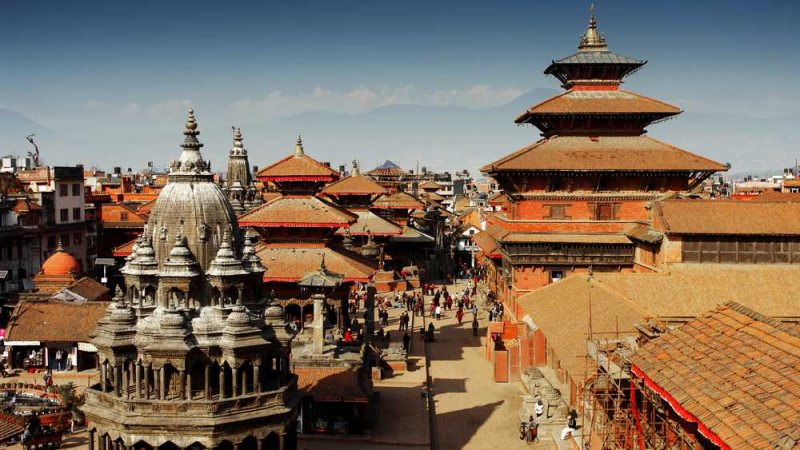
Photo: holidify.com 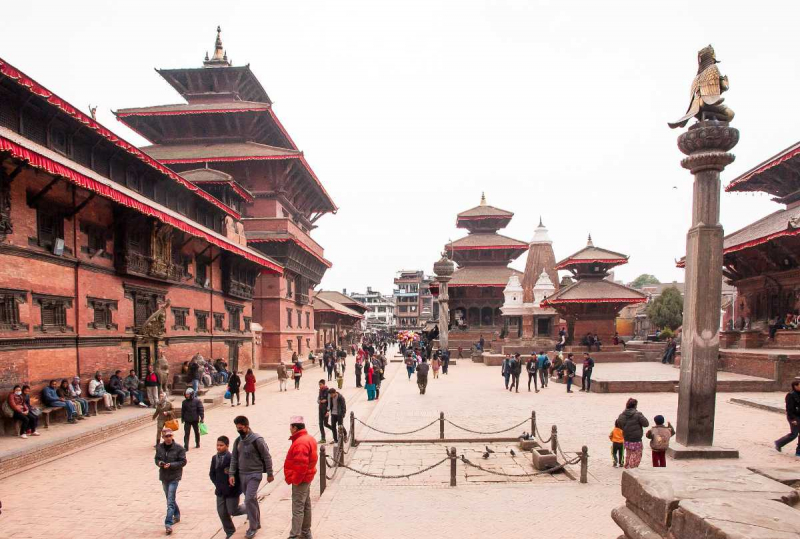
Photo: holidify.com -
The Bhaktapur Durbar Square is a UNESCO World Heritage Site that was previously the residence of Bhaktapur's royal dynasty. Visitors can explore the entire complex, which consists of four main squares – Taumadhi Square, Durbar Square, Pottery Square, and Dattatreya Square – which is locally known as Khwopa or the ancient Newa City. The Bhaktapur royal palaces, as well as various temples and other old structures dating from the 17th and 18th centuries, are common sights.
The Bhaktapur Durbar Square is located 13 kilometers east of Kathmandu Valley. The square as a whole is a spectacular showcase of Newari architecture. Every structure is a work of art in and of itself, and tourists will have a great time exploring. The earthquakes that struck Nepal in 1934 and 2015 badly devastated the square. The majority of ancient architecture was destroyed, including several buildings, statues, and structures. Other structures have been restored, but visitors can still see remnants of the destruction. Despite that facts, the square still remains one of the most beautiful historical sites in Nepal.
Timings: 7:00 AM to 7:00 PM
Time Required: 2-3 hours
Entry Fee:
- Foreign Nationals: NPR 1500
- Chinese Nationals: NPR 500
- SAARC Nationals: NPR 500
- Nepalese Nationals: Free Entry
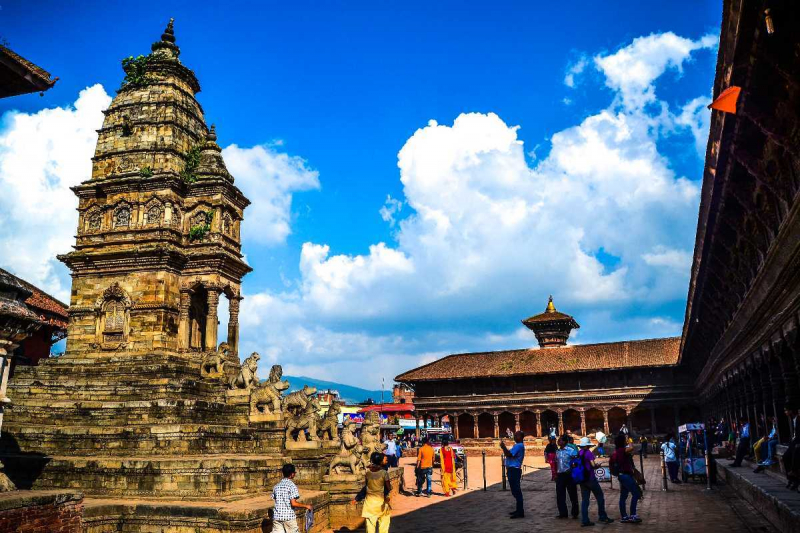
Photo: holidify.com 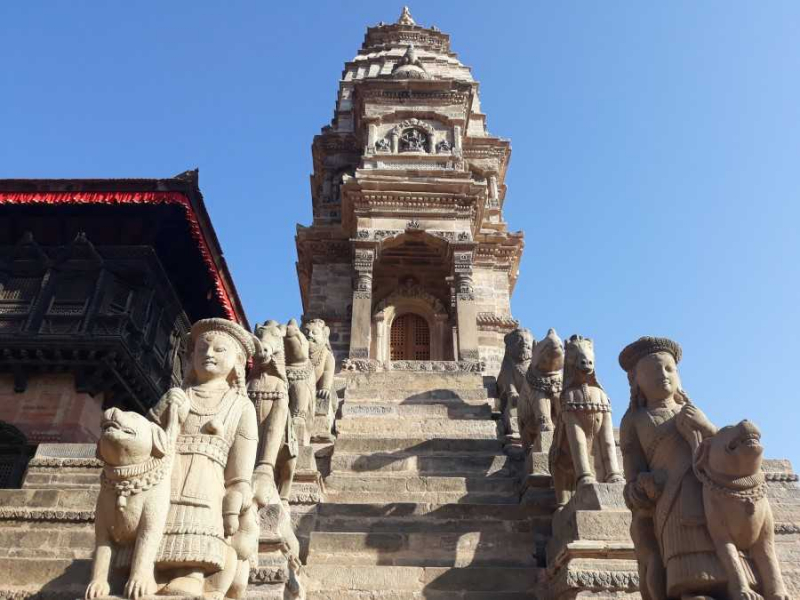
Photo: holidify.com -
Swayambhu Temple is one of the most prominent religious sanctuaries in Kathmandu, perched on top of the Semgu Hill on the outskirts of the Kathmandu Valley to the west. This site, which features a white dome stupa and a variety of shrines, attracts visitors on a daily basis. The tradition of circumnavigating the temple in a clockwise direction is popular among pilgrims since it is thought to wash away all sins. The sanctuary is considered one of the holiest sites for Buddhists and Tibetans, second only to Lord Boudha.
This holy place of worship, also known as the Swayambhunath Temple, Swayambhunath Stupa, and the Swayambhu Maha Chaitya, has been in existence for countless centuries and has always overlooked the Kathmandu Valley. Because of the numerous monkeys that have made the region surrounding the complex their permanent home, this temple has earned the amusing moniker of "Monkey Temple." Once inside the temple, make your way to the summit and take in the magnificent, panoramic view of Kathmandu's capital city.
Timings: 24 hours
Entry Fee:
- Foreign Nationals: NPR 200
- SAARC Nationals: NPR 50
- Nepalese citizens: No entry fee
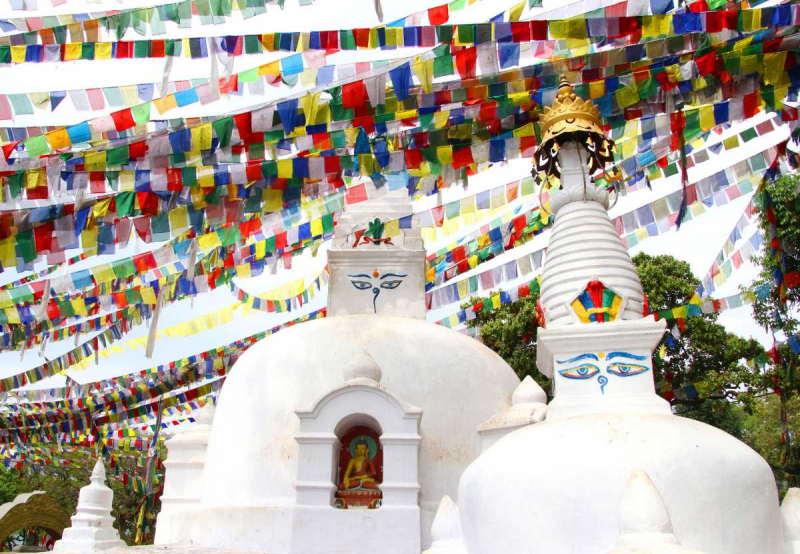
Photo: holidify.com 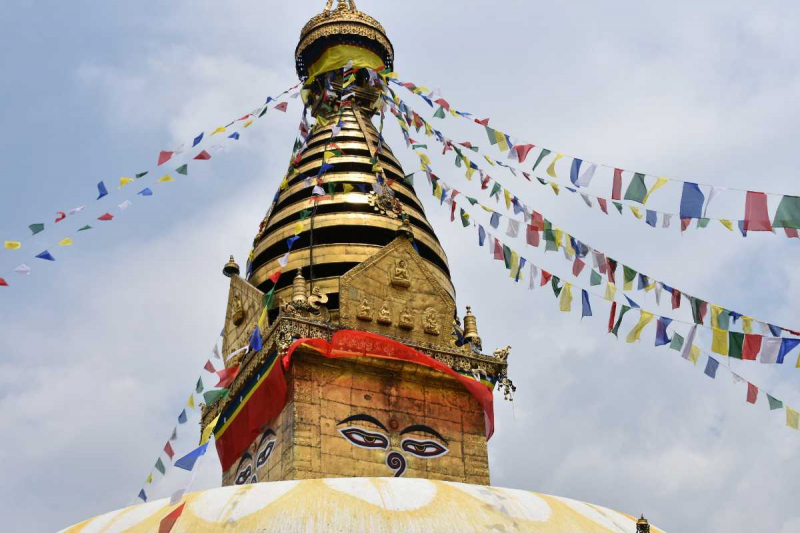
Photo: holidify.com -
The Pashupatinath Temple, one of Nepal's greatest Hindu sanctuaries, stretches across both banks of the picturesque and sacred Bagmati River on the eastern outskirts of Kathmandu. Thousands of devotees flock to the majestic sanctuary dedicated to Lord Shiva to offer prayers and seek blessings from him. The temple is definitely one of the most beautiful historical sites in Nepal that is worth visiting.
It is thought that the Jyotirlinga housed in the Pashupatinath temple is the head of the body made up of the twelve Jyotirlinga in India, which is strewn across a huge area with temples and ashrams. The majestic temple was designated as a UNESCO World Heritage Site in 1979.
Timings:
- Temple Timings 4:00 AM - 12:00 PM and 5:00 PM - 9:00 PM
- Inner Temple Courtyard: 4:00 AM - 7:00 PM, Sanctum Sanctorum: 5:00 AM - 12:00 PM (Morning) 5:00 PM - 7:00 PM (Evening).
- Apart from Abhisheka time, devotees can worship from all the four entrances from 9:30 AM - 1:30 PM
Entry Fee:
- NPR 1000 for Foreign and SAARC Nationals
- Free for Indian and Nepali Nationals
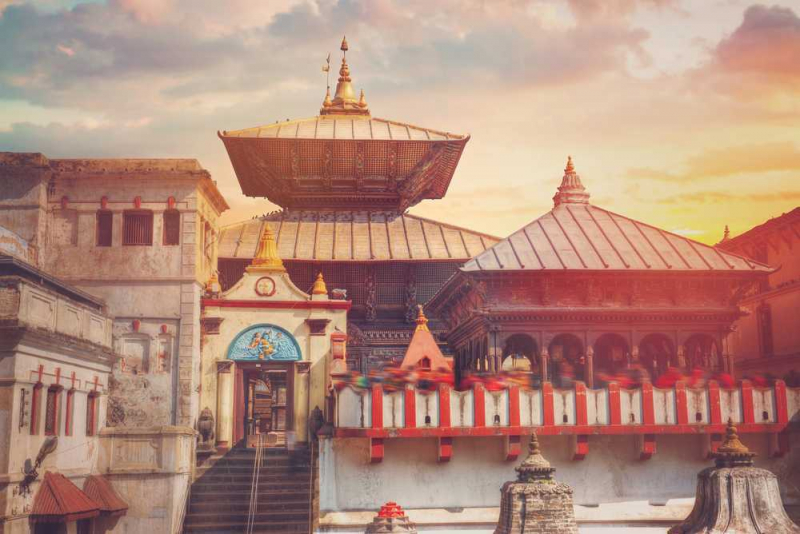
Photo: holidify.com 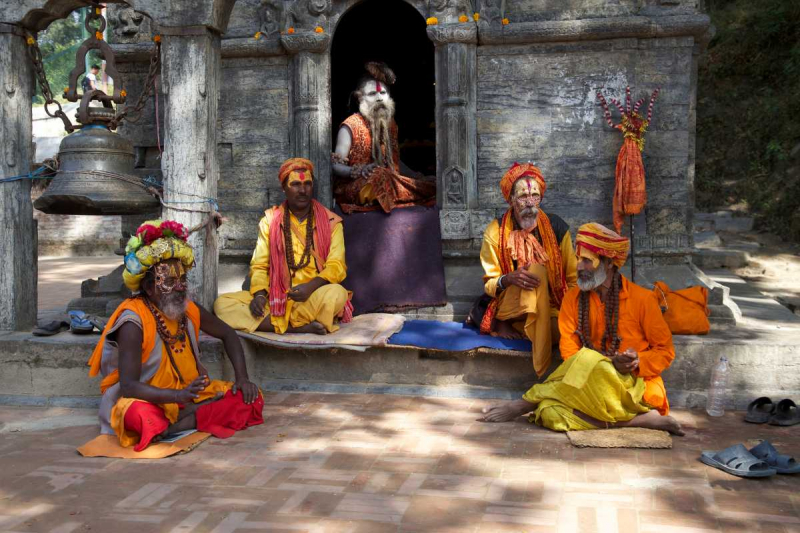
Photo: holidify.com -
Boudhanath Stupa, which is roughly 11 kilometers from Kathmandu's city center, dominates the Kathmandu skyline with its massive spherical shape. Thousands of pilgrims of many faiths visit this site on a regular basis. They conduct the 'kora,' a ritualistic circumnavigation of the gigantic dome. Anyone who circumambulates the stupa without harboring any negative thoughts is said to obtain good karma. Furthermore, the gates of hell are always shut for them!
This magnificent stupa's huge mandala makes it Nepal's and the continent's largest. Boudhanath Stupa was designated as a UNESCO World Heritage Site in 1979. The Buddha Stupa, Chorten Chempo, Chaitya, Jarung Khashor, and the Khasti have all been given to the Boudhanath Stupa over the years. Since 1959, the stupa complex has housed 50 Tibetan convents known as gompas, which have served as shelters for Tibetan refugees. This stupa is claimed to be the resting place of Kassapa Buddha's relics.
Timings: 24 hours
Entry Fee:
- Foreign nationals and Chinese citizens: NPR 400
- SAARC nationals: NPR 100Nepalese citizens: No entry fee
- Children (below 10 years old, irrespective of their nationalities): No entry fee
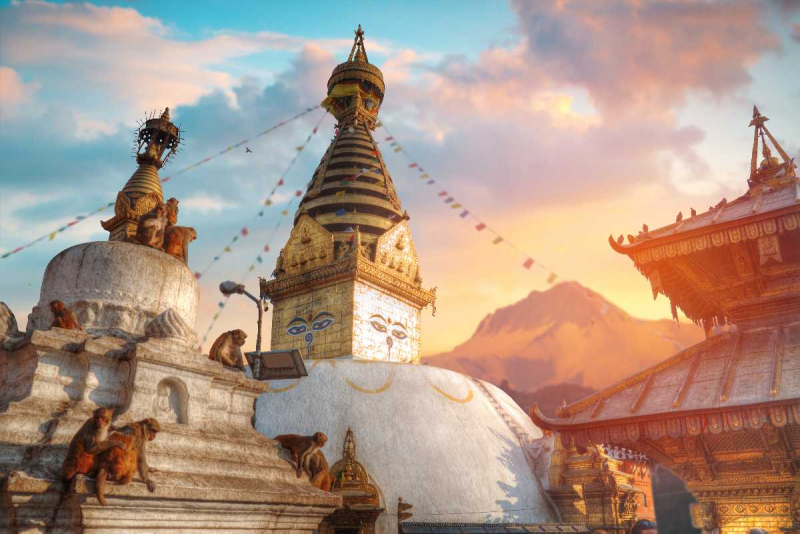
Photo: holidify.com 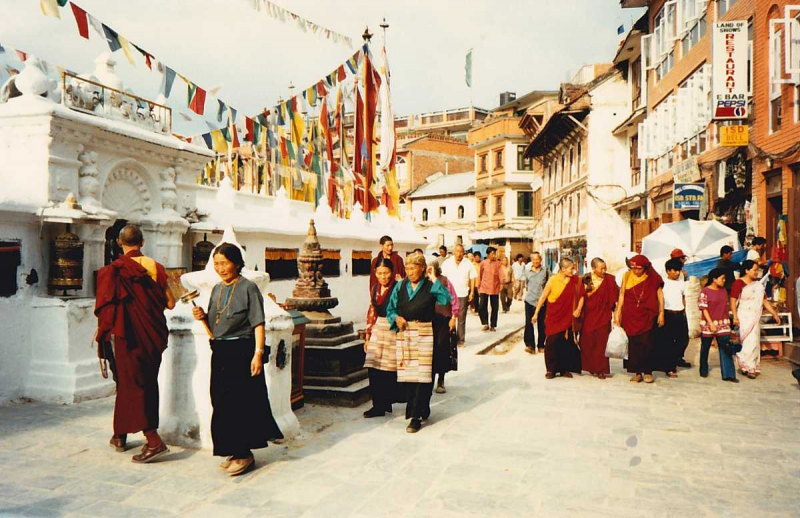
Photo: holidify.com -
Both the old Nepalese temple and the community that surrounds it are known as Changu Narayan. Changu Narayan is Nepal's oldest temple, located 12 kilometers east of Kathmandu in the Bhaktapur district. It boasts traditional Newari-style architecture that remains loyal to its heritage. The majestic temple, with its two-story brick-red building, is perched on a hill known as Changu or Dolagiri.
Lord Vishnu is honored at the Changu Narayan temple, which holds several of his avatars as well as other deities. And, like every other Hindu temple on the subcontinent, this one has two independent narratives about its past: one that corresponds to recorded history as we know it, and the other that is based on local mythology. A large forest of Champak trees surrounds Changu Narayan, and this forest plays a key role in the temple's stories.
Timings: 24 hours
Time Required: 1-2 hrs
Entry Fee: No entry fee
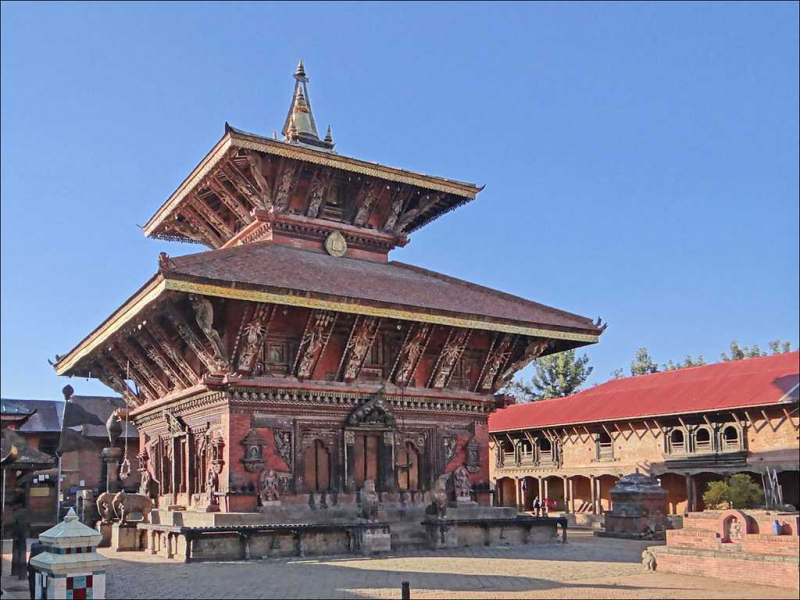
Photo: holidify.com 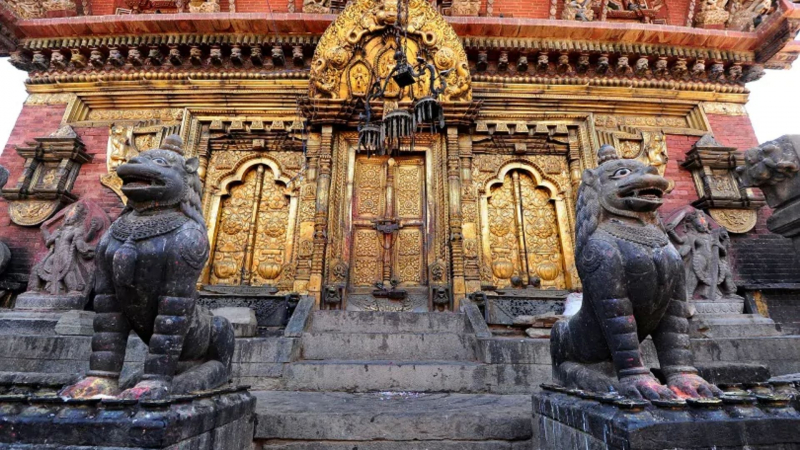
Photo: oyorooms.com -
Another place among the most beautiful historical sites in Nepal is Kopan Monastery. It is a spectacular Tibetan Buddhist Monastery located on the gorgeous Kopan Hills (20 minutes drive from the city center) on the outskirts of Kathmandu. It was founded between the late 1960s and early 1970s by the founders of the Foundation for the Preservation of the Mahayana (FPMT). It is a well-known tourist destination that attracts those interested in Tibetan Mahayana Buddhism. To obtain a sense of this old way of life, one can enroll in a short-term (7-day) course. The facilities are basic, but they ensure that everyone feels calm and collected when they leave.
Visitors can spend a few hours exploring the picturesque and serene monastery, participating in a retreat, or enrolling in one of the courses. Everyone is welcome on the monastery grounds. To prevent upsetting the pupils and monks, however, a general rule of conduct must be followed. They offer a cafe where visitors may enjoy a modest and healthy vegetarian dinner before taking a stroll through the monastery gardens. Even if it's only for an hour, everybody is invited to see the serenity.
Timings: 9:00 AM - 5:00 PM every day. The monastery doesn't allow visitors between 11th November and 20th December
Entry Fee: No entry fee
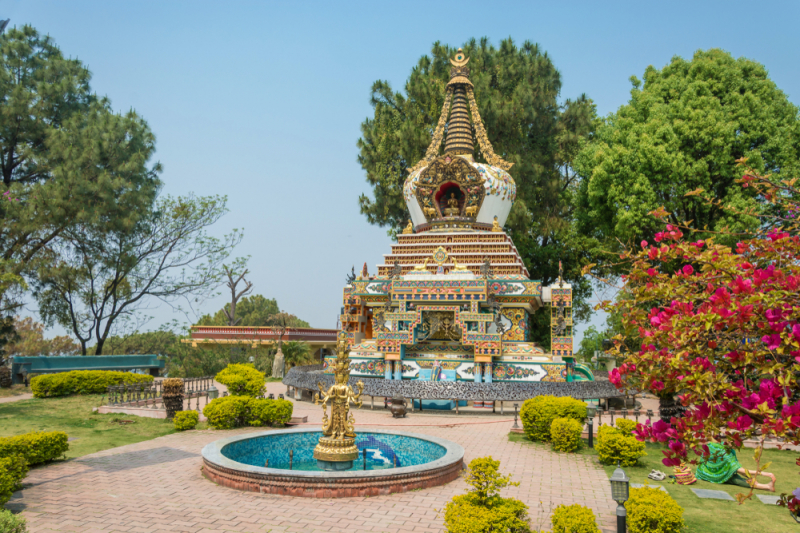
Photo: holidify.com 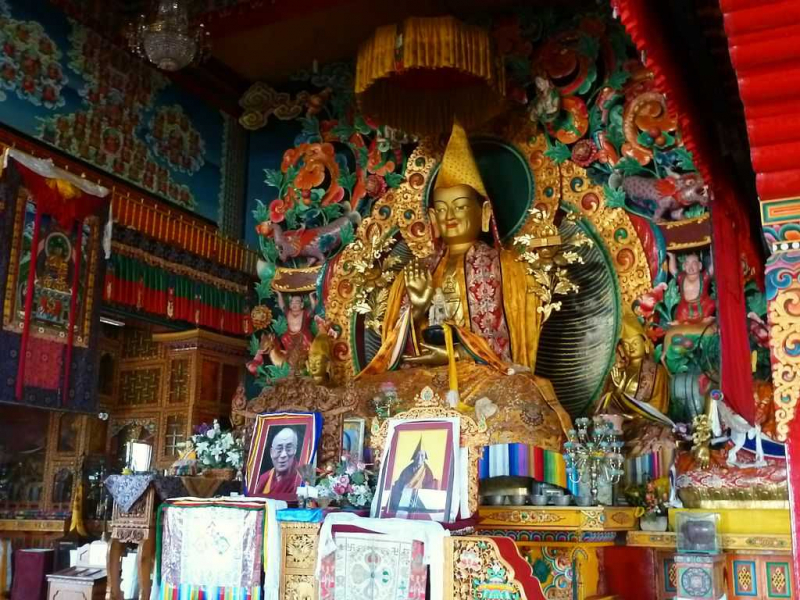
Photo: holidify.com -
The lovely hamlet of Lumbini, nestled in the Himalayas near the Indian border, is the birthplace of Lord Buddha. Lumbini is a UNESCO World Heritage Site with several historic stupas dating back over 2000 years and monasteries established by previous rulers. People come from all over the world to study the scriptures, meditate, do yoga, trek, learn more about Buddhism, and discover inner peace at this Buddhist temple. 'Lumbini' literally translates to 'The Lovely' in Sanskrit, and it lives up to its name!
Thousands of tourists have placed prayer flags with blessings and incantations around the entire site. Architecturally, each of the monasteries here is unique, with stunning facades and artwork. Monasteries from China, Japan, Sri Lanka, Myanmar, Germany, France, and other nations can be found in Lumbini. The Lumbini Circuit Trek allows experienced trekkers to see 64 historical and archaeological sites throughout the area, as well as trips to villages where they may receive a true taste of the local culture and hospitality.
The Mayadevi Temple is the most important and sacred place in the area, as it houses the actual location where Lord Buddha was born to Queen Mayadevi, King Suddhodana of Kapilavastu's wife. A stone marker can be used to locate the birthplace. The Bodhi Tree in Lumbini Garden, the Pushkarini - Sacred Pond, and the Ashoka Stupa (Pillar), which was built in 249 B.C., are all adjacent notable sites.
Best Time: October - November
Ideal duration: 1 day
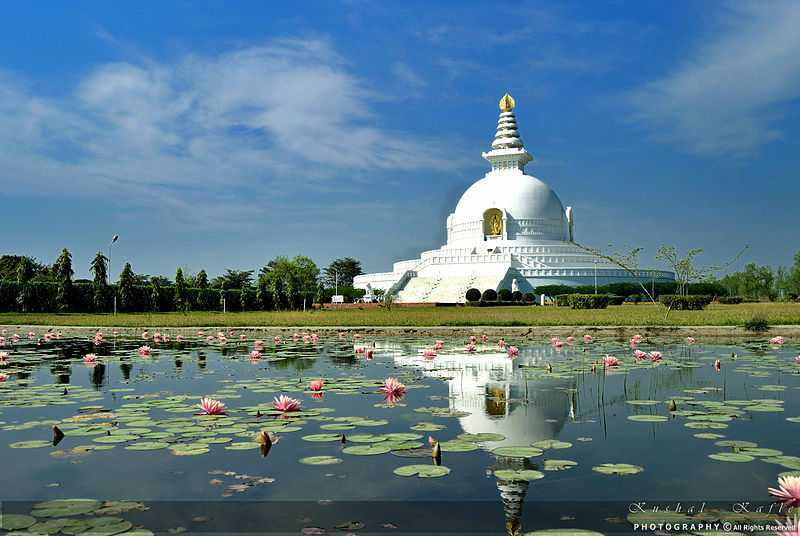
Photo: holidify.com 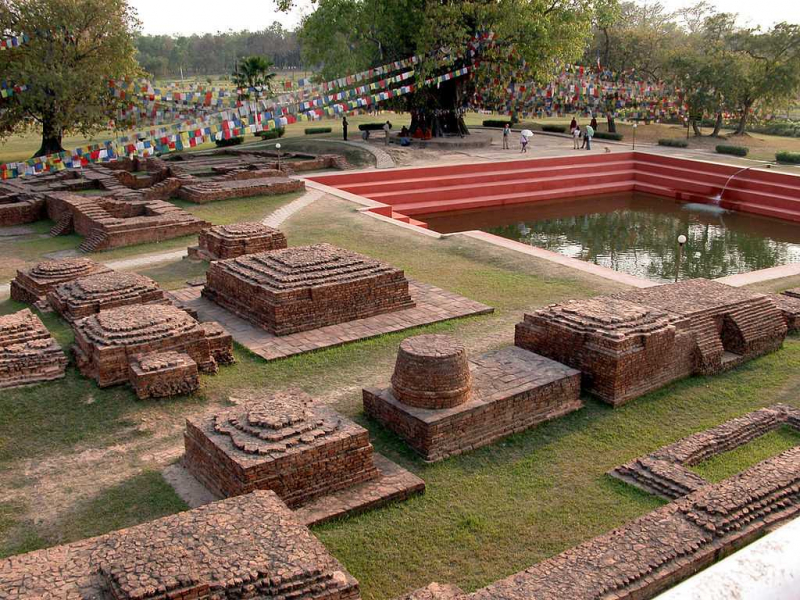
Photo: holidify.com -
Janaki Mandir, located in Janakpur, is Nepal's largest shrine dedicated to Goddess Sita. It was built on the site where Goddess Sita was born. The attraction is now a religiously significant monument and a heritage site, but it is still used by followers as a temple. The heavenly Janaki Temple is a must-see for everyone interested in learning more about the Ramayana narrative.
The Janaki Mandir, with its magnificent white exterior, is an example of Hindu-Koiri Nepali architecture. The three-story temple is made completely of stones and marbles, with Nepali flags, inscriptions, murals, magnificent lattice windows, and turrets adorning the 60 chambers inside. Devotees flock to the Janaki temple for auspicious dates and festivals such as Ram Navami, Vivah Panchami, Dashain, Deepavali, and Holi. Pilgrims flock from all across Nepal, Sri Lanka, and India to pay their respects to the Goddess, who is revered for her fearlessness, purity, selflessness, dedication, loyalty, and feminine attributes.
Timings: 5:30 AM - 11:00 PM and 4:00 PM - 8:30 PM
Entry Fee: No entry fee
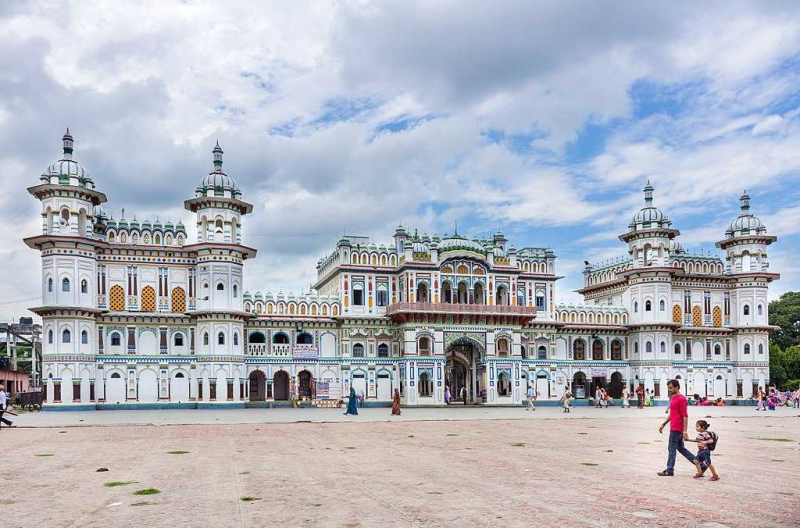
Photo: holidify.com 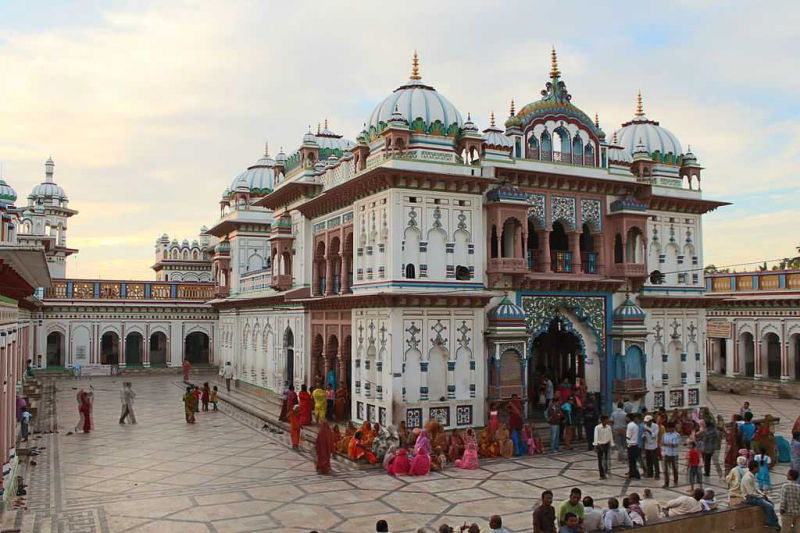
Photo: holidify.com -
Janakpur is a Nepalese city that is said to be the birthplace of Goddess Sita as well as the location of her marriage to Lord Ram. The site is considered one of the most beautiful historical sites in Nepal. Janakpur, often known as the City of Ponds, has over seventy ponds dotting its lush terrain. Learn more about the Ramayana, an ancient and revered Hindu epic, and its significance today. Visit the real-life locations featured in the epic and learn about local legends!
The city is the administrative center of the Dhanusa district and is located in Nepal's Terai region. Janakpur's primary attraction is the Ram Janaki Temple. Janakpurdham, the heart of Mithila culture, is also one of the venerated destinations on the sacred Parikrama (religious pilgrimage) in India, with Ayodhya, Kashi, and Brij.
Janakpur is a popular tourist and pilgrim destination because of the good weather, magnificent and colorful festivals held throughout the year, stunning temple architecture, and friendly residents.Best Time: September - March
Ideal duration: 2 days
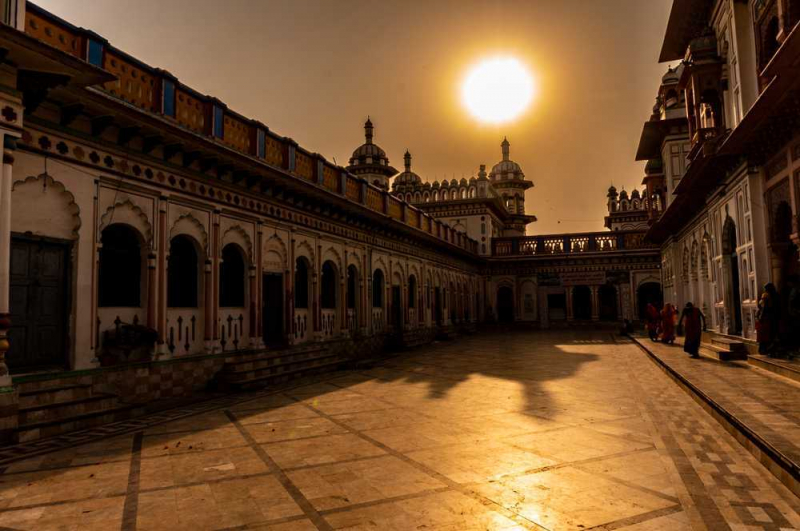
Photo: holidify.com 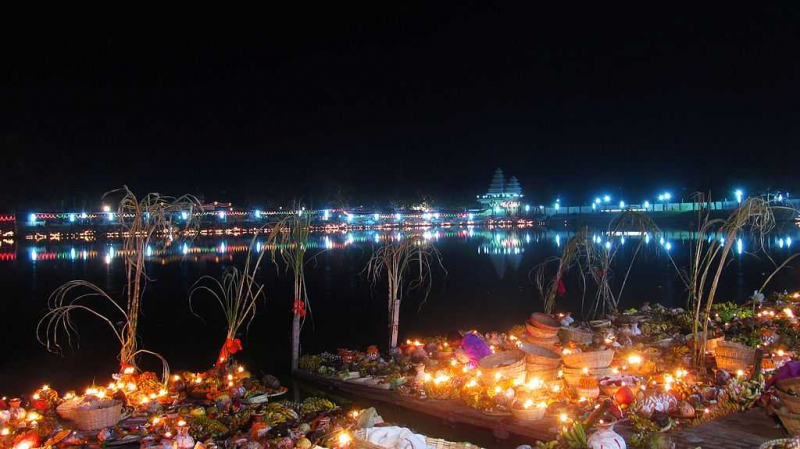
Photo: holidify.com -
The holiest of holy, Muktinath Temple, stands brilliantly as a symbol of religious significance for both Buddhism and Hinduism, perched at the highest altitude on the planet. It's in Nepal's Mustang, in the Muktinath Valley. This holy site is near rural Ranipauwa, which is frequently confused with Muktinath.
The temple's name is a combination of "Mukti," which means "nirvana, or salvation," and "nath," which means "master, or God." Muktinath temple is also known among Hindus as the "Mukti Kshetra," which means "the site where one receives moksha or liberation."
Muktinath Temple is ranked 106th among the Divya Desam, or "premium temples," of the one hundred and eight precious Shri Vaishnava temples. This holy sanctuary is a popular pilgrimage destination for both Hindu and Buddhist followers, and it is widely seen as a symbol of emotional and spiritual cleansing. Muktinath temple attracts visitors from all over the world for its sheer beauty and tranquility, in addition to religious fulfillment. Despite the fact that this location attracts both visitors and residents throughout the year, the crowds of devotees are particularly large during festivals such as Vijayadashami, Ram Navami, and Rishi Tarpani.
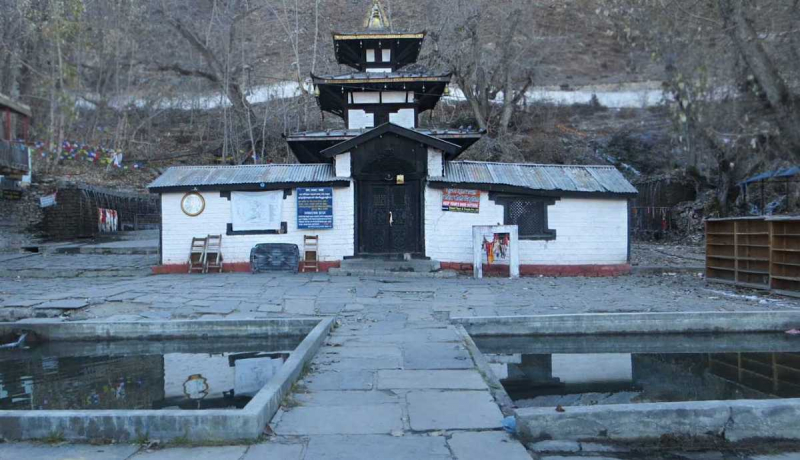
Photo: holidify.com 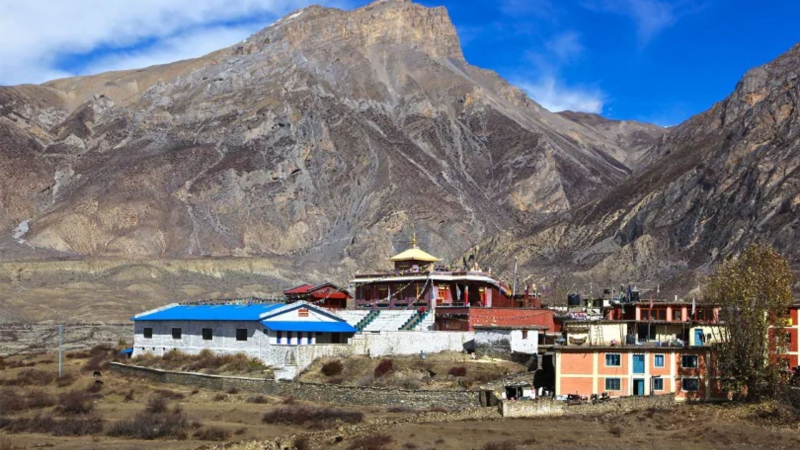
Photo: oyorooms.com -
Mustang Caves, also known as the Sky Caves of Nepal, are a collection of 10,000 man-made caves nestled along the edges of the magnificent valleys of the Mustang district. It is one of the most beautiful historical sites in Nepal.
Archaeologists and researchers discovered preserved human remains and skeletons between 2000 and 3000 years old after years of excavating and tests. They discovered many more valuable items, including sculptures, manuscripts, antiquities, and Buddhist paintings dating from the 12th to 14th centuries.
To go to Mustang, you must first travel to Pokhara by tourist bus or plane. It is entirely up to you how you wish to get to Mustang. After arriving in Pokhara, take a Jeep or a flight to Jomsom, the beginning location for the Mustang trip. If you are a nature enthusiast, you should take the jeep to appreciate the vast grandeur of this location.
The Royal Palace of Lo Manthang is one of the most popular tourist attractions in the city of Lo Manthang, which is also the capital of the Upper Mustang district. In the heart of the walled city, there are three monasteries. Far from the hustle and bustle of city life, this location embraces nature completely and displays the beautiful historical Tibetan Buddhist traditions and customs. Chooser and Cora La have a natural terrain where you may see sky caverns, huge rock formations, and monasteries. Luri Gimba and Ghar Ghumba have some of the best and most unique Buddhist old monasteries in the world. The Red Cliff with Caves, which is a nearby wall of Dhakmar, is the most prominent attraction in the scenery at Tsarang and Dhakmar. Damodar Kunda & Saligram Sila and Lower Mustang & Muktinath Temple are the other two attractions.
Entry Fee:
- Foreigners: 2000 NPR
- SAARC Nations: 200 NPR
- Nepalese: Free
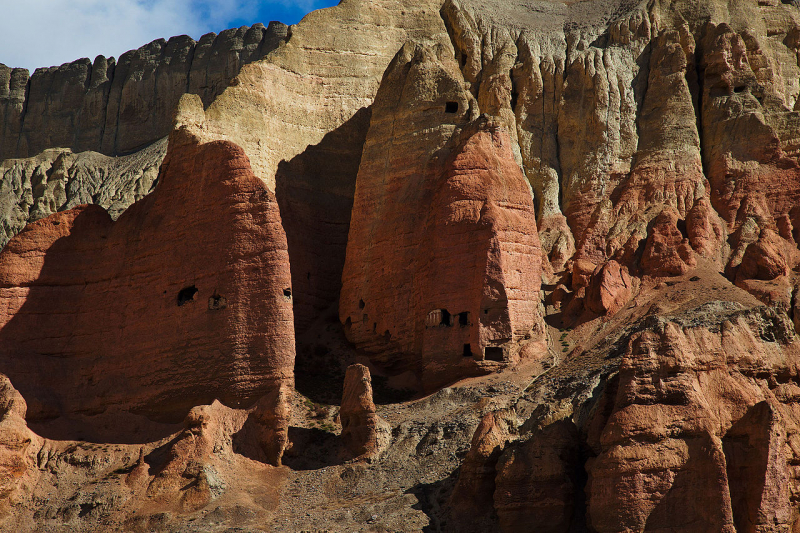
Photo: Wikiwand 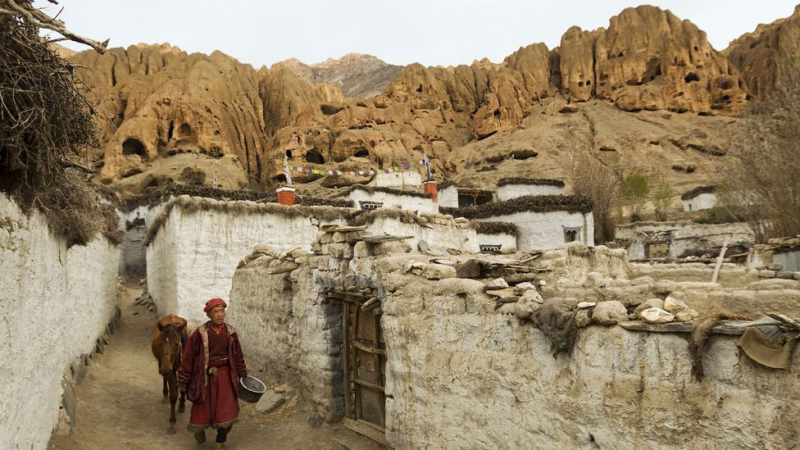
Photo: BBC

































